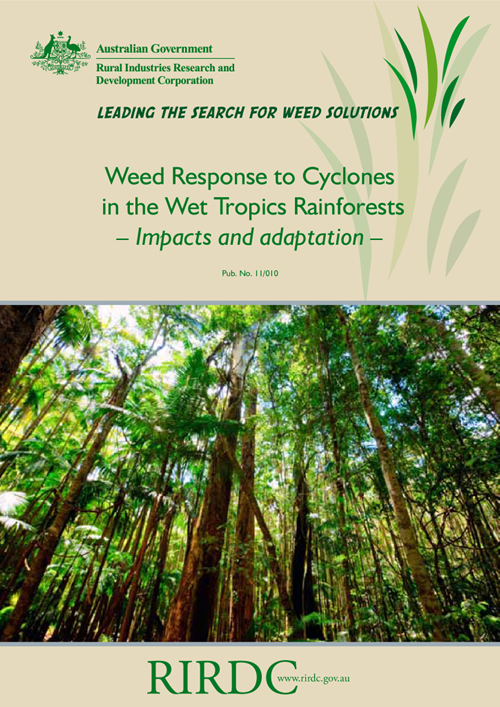The destruction caused by Severe Tropical Cyclone Larry in March 2006 led to the creation of ideal conditions for the rapid recruitment and spread of invasive weeds in the rainforests of northern Queensland. Climate change scenarios predict an increasing frequency of intense cyclones in the tropics, and if we are to reduce future impacts it is essential that we understand the dynamics of weed invasion following cyclones and the long-term effects of weeds on forest composition and structure.
In the event of other cyclones the woody trees, vines and shrubs that were recruited and persisted post-Larry will have the capacity to spread rapidly through the landscape and increase their contribution and impact on rainforest in the event of a second cyclone re-opening the canopy.
Key findings of the report are:
That most of the weed flora in rainforest habitats following a severe cyclone have a transient nature
The very high litter and debris loads that result present a major barrier to weed establishment.
Three to four years after the event, canopy disturbance remained similar but both the abundance and the diversity of weeds had declined. This appears to be primarily the result of continued regrowth or regeneration of native species.
However, larger woody trees and vines are more persistent and reproduce so long as the canopy remains relatively open. As light levels decrease these invasive weed species will probably decline.
If another cyclone causes significant disturbance before the canopy recovers, these fast-growing and early reproducing shrubs will have the capacity to spread rapidly through the landscape and increase their contribution to the weed community.





